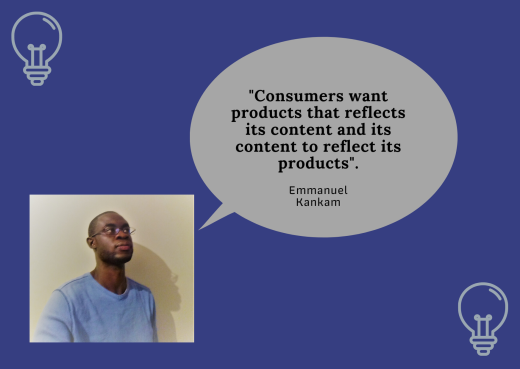
“Service marketing refers to the application of a different set of tactics or strategies to anticipate the consumer’s need for an intangible product. And thus, meet their requirements accordingly, to create maximum value for them from their purchase” – theinvestorsbook.com . Service marketing is all about the customer service experience.
In this blog post, I will be using the example of a phone shop and essentially the ‘soft p’s’ of the marketing mix (people, process and physical evidence) which are essential for products and services in today’s competitive market. The scenario will be looked at through the eyes of the customer in the services a phone shop provides when looking for an upgrade on a phone and also if there is room for improvement for the mobile phone retailer so it can maintain its dominance in telecommunication market.
- Communicating successfully
Communication is “a totally two-way, interactive, dyadic process, which has major implications for all organizations, not just service providers” (McDonald & Payne, 1996). Over the years, phone shops have evolved from just being a mobile phone retailer into a telecoms service provider. For a customer looking to purchase or upgrade their phone, phone shops would be perceived as an ideal outlet for meeting their expectations as well as the organisations through the customer service it provides which is paramount for it to remain successful and profitable.
- Service at its best?
The characteristics of a service are that they are intangible – there is no physical form but rather it is dependent on experience and they are inseparable- performed by people for people. In this instance, a customer is at a phone shop looking for the latest upgrade on their mobile phone. Services can also be variable – “the human, ‘people’, element means that individuals have their own unique ‘style’. While standards can be met and set, human beings by nature are individuals, not machines” (Home Learning, 2009). Customers may visit a phone shop but may not get the same experience or service as before which could be potentially detrimental to the organisation.
Services can also have a lack of ownership which can raise the question of whether or not good customer service is being fulfilled. Due to this the marketing mix has been extended to people, process and physical evidence to counteract any issues the characteristics of services may convey. The ‘experience flow chart’ below hypothetically demonstrates a scenario the service a phone shop provided when a customer was looking to upgrade their mobile phone.
Phone shop visit


2.1 Meeting Expectations
The American marketing author, consultant and professor Philip Kotler identified four categories differing from a ‘pure’ product to a ‘pure’ service. Getting an upgrade on a mobile phone from the phone shop is a tangible product which comes with services. The phone is the product but it has built-in services to enhance its appeal to the customer such as free data roaming in the EU.
“Listening to and engaging positively with customers shows you care and reinforces customer loyalty” (Paul & Nilsson, 2011). By the sales assistant in the phone shop conversing with the customer and making eye contact whilst on hold, illustrated they had an interest in the customer and this can be seen as a mechanism in making them more comfortable and gaining their trust. The sales assistant listened and asked how much the customer was willing to spend or if they wanted to stick to the same price plan. When looking at the physical evidence aspect, the sales assistant at the till was dressed smartly in the company uniform and the welcome was warm as they immediately asked how they could help. The store was also tidy and spacious for customers to move around and items were clearing marked by point of sale materials such as posters.
2.2 Expectations too high?
As services are perceived as intangible, the tangible aspects – people, process and physical evidence have to pay dividends. “Service delivery is of great importance to the customer’s overall perception of service quality” (McDonald & Payne, 1996). When the customer arrived in the phone shop, they were not greeted and no form of welcome was initiated by members of staff so the customer had to make the first move to get noticed. The first sales assistant lacked product knowledge and when the customer returned to the store no one was there or seemed interested in meeting their needs. The physical evidence was clear from the customer’s return that the service they required was poor and highlighted bad customer service in comparison to earlier as the customer left the store unsatisfied.
2.3 Collaborating for Success
“Internal marketing involves creating, developing and maintaining an organisational service culture that will lead to the right service personnel performing the service in the right way” (Harris & Dennis, 2002). When the customer arrived at the phone shop, they should have been welcomed by a sales assistant. It is understandable that the store was busy but this could raise the issue of employing more members of staff even though it could be considered an expense in regards to money and time. As new members of staff are not experienced, a way to counteract this is to have more experienced sales assistants with them – a buddy who can monitor and help them when they need assistance. Another way to counteract this would be to invest more in training.
By looking at the extended marketing mix, people are essential. When the customer walks in the store they see the sales assistant as the company, they see them as the brand ambassador as they represent the company from the uniform they wear to the service they provide by making things tangible by offering assistance, conversing and making eye-contact. This is why monthly meetings with colleagues could be beneficial to the company and the customers. In the monthly meetings, colleagues could discuss what issues they had that month and could work together with management to find solutions which would equate in providing a better customer service experience
In conclusion, the service provided by the phone shop was a mixture of good and bad and improvements need to be made in providing the right customer service. More training is paramount and staff should also be trained in different departments of the store. By staff being flexible this can be translated into a service that the customer desires. There also has to be a consistency in the customer service provided. Sales assistants have to be proactive at all times in approaching customers and listen carefully and respond to their needs in a timely manner or risk losing that customer and they could leave with a bad impression of the organisation.
For the phone shop to maintain its dominance in the telecommunication market, it needs to make more contact time with its customers like what the sales assistant did whilst on hold on the phone. This is because it can make the bond stronger with the customer which costs nothing but the payoff could be rewarding in the size of the transaction and showing the customer they care. After all, customers are the lifeblood of a company. “Take care of your customers, and they will take care of you by driving business your way and teaming up with you to improve your business and what you offer” (Paul & Nilsson, 2011).
Until next time….
Emmanuel #EKsMarketingViews















